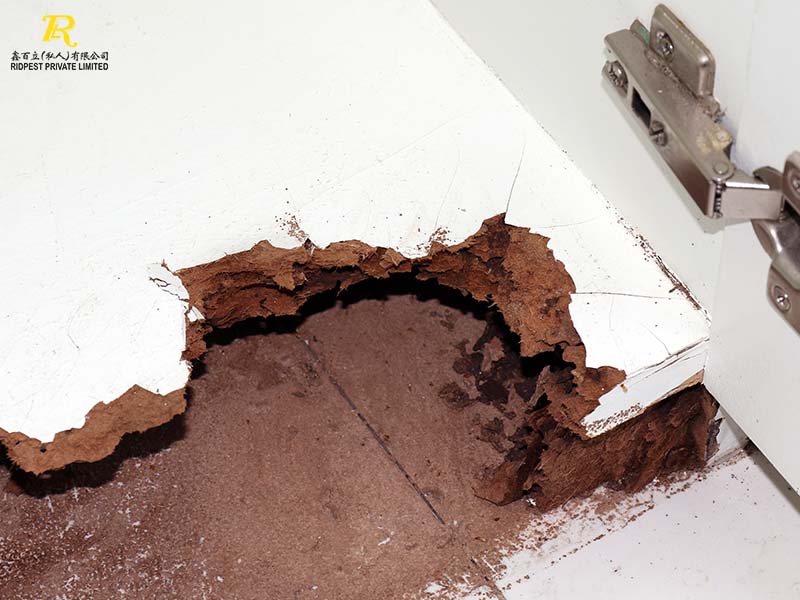What are Termites and How Do They Endanger Property?

Termites are one of the most destructive pests in terms of cost, as damaged property structures can prove extremely expensive to fix. Perhaps even more importantly, a building with compromised structural integrity can be dangerous for folks under its roof. Termites are also adept at remaining concealed, and are often only detected when the damage has already been done. In this article, we’ll explore the various hazards posed by termites, how you can detect signs of termites, and how pest control services in Singapore like RidPest can help eliminate pesky termite infestations.
What are Termites?

Termites are small, soft-bodied insects that can be found all over the world. While there are over 3,000 species worldwide, only 183 of them actually cause damage, and of which, 83 cause significant damage to wooden structures. Termites are typically categorised into either drywood or dampwood variants — drywood termites infect wooden structures and furniture in different climates, while dampwood termites only attack lumber exposed to rainfall or soil. Drywood termites can be particularly troublesome as they thrive in warm climates and can be transported across the world through contaminated goods and transportation. While there are many different species of malevolent termite species, you can be assured that companies offering termite pest control in Singapore are familiar with them all, and the appropriate measures required to exterminate them.
Types of Termite-Related Damage

Different kinds of termites cause different kinds of damage to a property. For instance, subterranean termites stay near moisture-rich soil and build their colonies there. This translates to damages to the foundational wood of a property such as the crawl space or along the foundational walls, as those usually get in the way of their new home. Foundational wood damage is expensive as it’s often difficult to repair and may even impact the other areas of your property.
Termites can also damage wood that is hidden around your house and are hard to inspect, such as the wood under your property, inside the walls, and if you have one, the attic. There are, however, other areas in your property that you can easily check for structural damage, such as the wood around windows and doors. Signs include wood that looks wavy, has voids, or is weakened.
For areas that are hard to inspect, consider engaging termite control in Singapore that specialises in getting to the nooks and crannies hidden around your property.
Spotting Signs of Termites

While termites tend to conceal themselves, they often leave incriminating evidence of their presence in your property. These telltale signs include sagging floors and ceilings; dust particles similar to dust but aren’t dust; tiny wings that resemble scales; and areas that appear slightly damaged by water. Additionally, termites aren’t just attracted to old buildings; they are also known to inhabit and infect new buildings, even shortly after construction. If you suspect a termite infestation in your property but aren’t quite sure what the signs are, do engage pest control services in Singapore for a peace of mind.
RidPest’s Termite Treatments

Depending on the environment and the types of structure involved, pest control services in Singapore, like RidPest, utilise different treatment plans to get rid of termites. Soil treatment, for instance, is the most effective and cost-efficient form of subterranean termite control or prevention, especially for properties surrounded by soil. Other methods include corrective treatment, which is similar to soil treatment except holes are drilled into the soil; dusting treatment, which can be more effective depending on one’s budget and future plans for their properties; foaming treatment; above ground baiting; and more.
For more information about the various termite treatment methods that we offer, please visit our website.









